6.3. Zero emission HDVs
Explore adopting zero emission HDV, our recommendations, the ranges, and prices. Read case studies from Royal Mail, Amazon, CEVA Logistics, Warburtons, DHL and Bring and Posten.
Adopting zero emission heavy-duty vehicles (HDVs) has the potential to significantly reduce your fleet's emissions
Zero emission HDVs are still at an early stage of development. As with lighter vehicles, plug-in hybrid electric vehicles (PHEVs) and alternatively fuelled vehicles act as bridges for fleets transitioning from internal combustion engine (ICE) HDVs to zero emission vehicles (ZEVs). There are various zero emission HDV options currently in development by manufacturers.
A big drawback of battery electric HDVs is the battery size they need due to the vehicle’s weight. The larger the battery size, the more room it takes up in storage space, and an increased requirement for high powered charging infrastructure. It also increases the vehicle’s weight.
Catenary charging, charging vehicles during a journey via overhead cables, is being investigated as an alternative solution on a national scale (see the report by Catapult, 2021). However, this is still a few years away from being a suitable solution. For now, we recommend focusing on planning the procurement of battery or fuel cell electric vehicles.
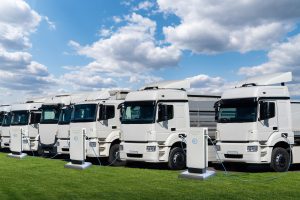
Our recommendations
Fleet managers should see whether any of their current models can be replaced with ZEVs based on existing technology. Some zero emission HDVs already in operation include battery-electric small lorries and buses. Many of these are currently being manufactured and introduced to fleets across the UK. Larger lorries are being trialled globally.
Vehicles that complete short and predictable journeys are more suitable to replace with BEVs. This is because the battery weight limits range. These vehicles are also more likely to travel in urban areas, so quieter and less polluting vehicles will be better for the environment. This area of zero emission HDVs is growing fast, so it’s worth seeing if you could introduce them to your fleet. Otherwise, there are lots of trials currently underway that you could get involved in.
Zero emission HDVs can have lower running costs than ICE equivalents due to the reduced service, maintenance and repair and fuel costs. This means zero emission HDVs can have short payback periods. One study found an equal total cost of ownership to an ICE equivalent after just five years (Earl, et al., 2018).
The Scottish Government has set a target that public sector fleets will not take on any new ICE vehicles from 2030. This includes HDVs. If you’re a public sector organisation, you need to consider this when procuring vehicles. We recommend you start planning the long-term transition to a zero emission HDV fleet now. This will help you to avoid running highly polluting vehicles for longer than necessary.
Pricing
The costs of zero emission HDVs are currently high. This is due to the current low demand and the cost of their large batteries. However, you should consider the total cost of ownership when buying these vehicles.
HDVs have a longer life cycle compared to other vehicles. Operators will have lower running costs thanks to electricity generally being cheaper than diesel, along with cheaper service, maintenance, and repair costs.
These vehicles should also be able to operate for at least 10 years, or longer if the batteries are replaced if they wear out. This means zero emission HDVs often have a lower total cost of ownership over their whole life compared to their diesel equivalents.
HDV pricing varies significantly. This is largely because of how much variety there is within specific models, as the chassis and body are bought separately. There is currently some uncertainty around how the zero emission HDVs market will look due to the unpredictable costs of this new technology and the limited number of models currently available. Pricing for these vehicles will become clearer after the first customer trials have finished.
The table below shows some approximate BEV HDV prices drawn from our analysis of the market, based on dialogue and indicative quotes from manufacturers. We have not yet been able to get robust prices for fuel cell HDVs, so these are not included. You can use these indicative prices can as a starting point for financial planning as actual prices may be different.
Table 19 - Costs of different types of BEV HDVs as of April 2022
| Vehicle size | Range | Battery / approx. range | Indicative price |
|---|---|---|---|
| 7.5t | 180-410km | 110-210kWh | £56,000-£159,000 |
| 12t | 300-350km | 140-250kWh | £139,000-£267,000 |
| 18t | 220-450km | 165-565kWh | £205,000-298,000 |
| 26t | 220-300km | 280-375kWh | £224,000-£282,000 |
| Refust collection (26t) | 100-150km | 300-360kWh | £225,000-£420,000 |
Table 20 - Battery-electric HDV examples
| Make and model | GVW (tonnes) | Range | Details |
|---|---|---|---|
| DAF CF Electric | Up to 37 tonnes | Up to 250km | Available as a two-axle tractor and as a three-axle rigid truck. 350kWh battery pack. Up to 250kW charging. |
| DAF LF Electric | 19 tonnes | Up to 280km | 4x2 rigid truck. 282kWh battery. Up to 150kW charge point, or in 6.5 hours on a 22kW charge point. |
| Eforce trucks | 18-44 tonnes | 450km depending on driving profile | Modular batteries up to 340kWh, comes in many different models including an RCV, 91% battery to wheel efficiency, DC charging up to 350kW. |
| MAN eTGM | 26 tonnes | 190km | 6x2 truck, 185kWh battery pack, up to 150kW DC charging. |
| Mercedes-Benz eActros | 18 or 25 tonnes | Up to 200km | Two battery packs totalling 250kWh, up to 150kW charging speeds. |
| Mitsubishi Fuso ecanter | 7.255 tonnes | 80 miles | 82.8kWh battery, 30% lower maintenance costs. |
| Paneltex (Isuzu) | 7.5 tonnes | Up to 240km | Charging at either 9kW or 18kW. 80, 120 or 160kW battery packs. |
| Paneltex (Isuzu) | 11 tonnes | TBA | Charging at either 9kW or 18kW. 80, 100 or 120kW battery packs. |
| Volvo FE | 27 tonnes | Between 120km and 200km | Three axles. Can be fitted with 3 or 4 battery packs, at 66kWh per pack and a lifetime of 8-10 years. Capable of fast charging. Range: refuse and light construction up to 120km, distribution up to 200km. |
| Volvo FL | 16 tonnes | Up to 200km | Can be fitted with 2 to 6 battery packs at 66kWh per pack and a lifetime of 8-10 years. Use for urban deliveries and waste collection. |
| Volvo FM Electric | Up to 44 tonnes | Up to 300km | Total battery capacity between 450 and 540kWh. Fully charge in 2.5 hours at 230kW DC charging. |
| Volvo FMX Electric | Up to 44 tonnes | Up to 300km | Total battery capacity between 450 and 540kWh. Fully charge in 2.5 hours at 230kW DC charging. |
| Volvo FH Electric | Up to 44 tonnes | Up to 300km | Total battery capacity between 450 and 540kWh. Fully charge in 2.5 hours at 230kW DC charging. |
| Scania BEV | Up to 29 tonnes | Up to 250km | BEV with battery capacity of 165kWh or 300kWh. Available with the L and P-series cabs and body types such as refrigerated box, tipper, concrete mixer and refuse collector, as well as special vehicles for fire and rescue services. Can charge at up to 130kW DC. |
| Renault D Z.E. | 16 tonnes | Up to 300km (real world) | Total battery capacity of between 200 and 300kWh. Available in two wheelbases (4.4 and 5.3 meters). |
| Renault D wide Z.E. | 26 tonnes | Up to 200km (real world) | Total battery capacity of between 200 and 300kWh. Allowing real world range of up to 200km. This is only in a 3.9-metre wheelbase. Suitable for refuse collection. |
BEV HDV adoption case studies
-
In 2017, Royal Mail announced its trial of three Arrival battery-electric vans. These range from 3.5-7.5 tonnes and are designed for deliveries around London.
Royal Mail has said it is trialling these for the potential replacement of their whole delivery fleet.

Source: Electrek, 2017
-
UPS has ordered 10,000 Arrival Generation 2 battery-electric vans to be introduced to the fleet between 2020 and 2024. These are to be rolled out globally, including in the UK.
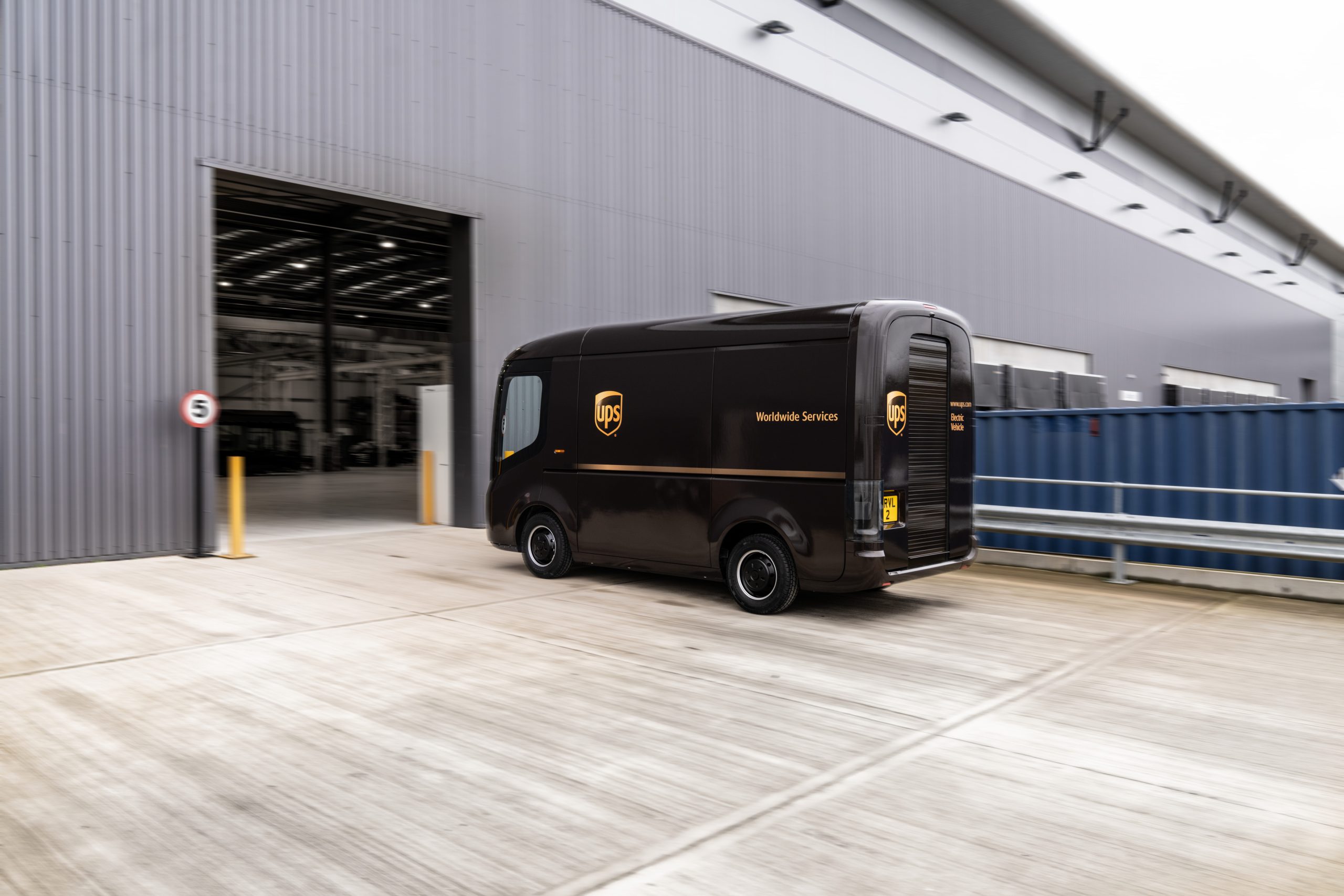
Image Source: Arrival, 2020
-
In 2019, Amazon announced its plans to produce up to 100,000 electric delivery vans —the first 10,000 to be made by the end of 2022 and the remaining 90,000 by the end of 2030.
The Rivian-Amazon delivery van is already being trialled in Los Angeles, with more currently in production. These vans have a range of approximately 150 miles on a full charge.
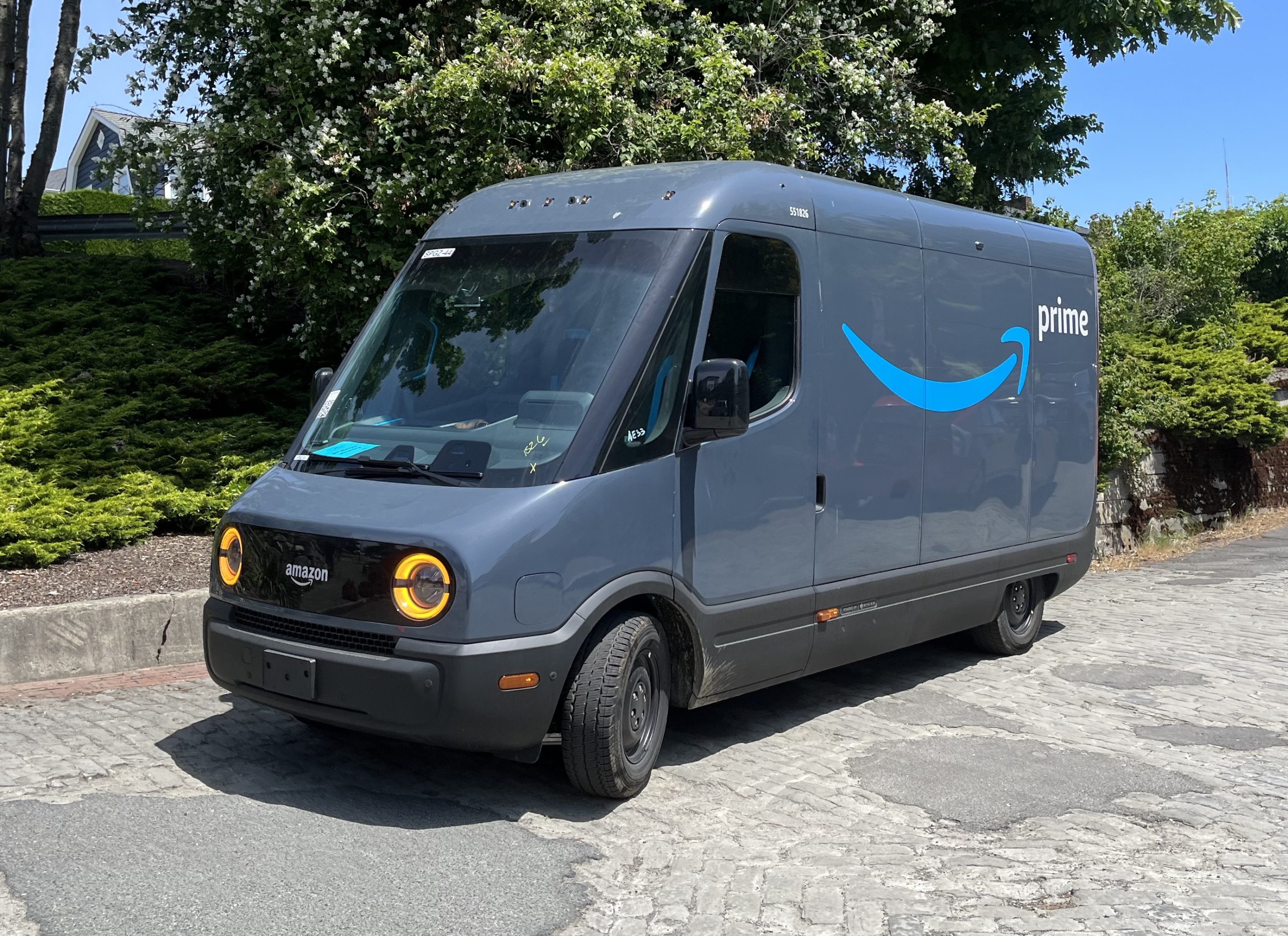
Image source: Wikipedia
-
CEVA is taking on a six-month trial of two electric HDVs provided by Tevva. These 12 tonne vehicles will operate from Dartford and transport supplies to an NHS Foundation Trust base. One has a refrigeration unit within it.
This trial will be monitored using telematic data to identify how these electric HDVs can be used to meet future customer demand.
-
Warburtons has taken on its first electric HDV, a 16 tonne Renault Trucks D ZE operating in London, so additional benefits include reduced pollution in this urban area.
-
DHL is now operating its first electric HDV in London. It has taken on a 16 tonne Volvo FL Electric, designed to complete last mile deliveries to operate in London’s ultra low emission zone (ULEZ).
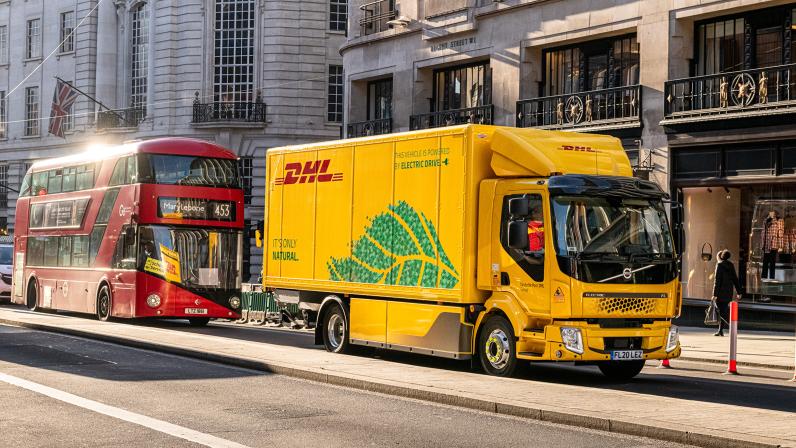
Image source: DHL, 2020
-
In addition to its urban electric HDV, DHL has announced the trial of a long haul electric HDV. Designed by Volvo, the truck will be up to 60 tonnes and travel around 150km between two depots.
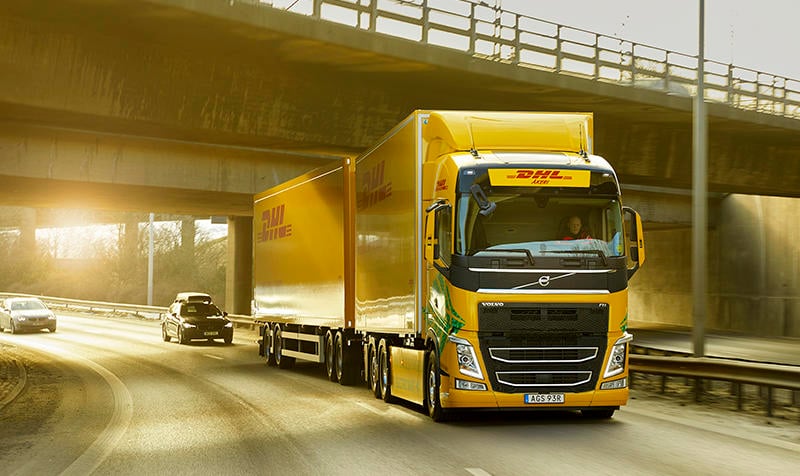
Image source: Commercial Motor, 2021
-
Scandinavian mail company Bring and Posten is due to trial Volta Truck’s 16 tonne freight distribution BEV. The BEV will complete inner city parcel pick up and drop-offs.
The trial began at the start of 2021 in Norway, Sweden, Denmark and Finland.

Image source: MotoringMatters.ie